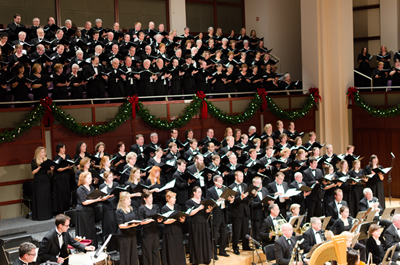There is a rumble brewing – the terms of which have been laid out and agreed upon by both sides of the track. There is to be no heat, blades, or chains – only skin. This fight, long overdue, encompasses all of the frustration and misunderstanding at the core of the feuding Greasers and the “Socs.” As a result, the stakes have never been higher. With this ominous storyline established, tension and heart were palpable in Twin City Stage’s exciting production of The Outsiders.
The play, by Christopher Sergel, is based on S.E. Hinton’s 1967 novel of the same name. The coming of age tale chronicles two rival gangs as they navigate bravery, social oppression, and the consequences of their violence. The novel, written while Hinton was only a teenager herself, continues to gain commercial appeal, and it is still considered popular reading for younger demographics, especially in academic canons.
Even Francis Ford Coppola’s 1983 film adaptation starring Patrick Swayze, Rob Lowe, Tom Cruise, Matt Damon, Emilio Estevez, and Diane Lane was a massive blockbuster success. The timelessness of the story resonates with audiences because it intelligently casts light on social themes that continuously plague young people: peer pressure, isolation, love, and the construction of family.
Sergel maintains the essence of the piece by not altering much of the dialogue and relying heavily on soliloquies as a means of narrating the first person prose of the novel into an effective theatrical rendition. The play does not dilute the central character’s point of view while still generating an ensemble experience.
It is important to note that the cast, predominately comprised of teenagers and young adults, innately captured the energetic adolescence and spirit of the story. Therein lies the benefit of age-appropriate casting as a tool to authenticate the perspective of the play, as well as reinforce various devices of storytelling. In a production such as this, where the subject matter is centered on youthful angst and self-discovery, it is vital for audiences to believe the performance of a character’s journey is a result of the actor approaching the material with curiosity relevant in his own life, and not from a point of retrospective maturity, as can be the case if casting older actors in younger parts. Therefore, when Ponyboy (eighth grader Quinn Bankson) contemplates the meaning of Robert Frost’s poem “Nothing Gold Can Stay,” and in turn Johnny (young Beau Renegar) responds, “Stay gold Ponyboy. Stay gold,” the actors’ natural innocence transcended and struck the audience with deep emotional impact. One was unable to escape the sentiment of a young boy’s moving request for the other to preserve his youthful purity.
Bankson is particularly deserving of praise for his performance. It is no easy feat to carry a show and be active in the majority of its scenes. The promising young actor did just that with great confidence. Stephen Howard, as the rebellious and self-destructive Dallas, also gave an especially passionate performance.
Twin City Stage should be applauded for its selection of The Outsiders for this Youth Production Series performance. This play provided the perfect opportunity for young actors beginning their discovery of who they are as artists to portray young adults beginning the discovery of who they are as people. Now that these actors have demonstrated appropriate stage presence and verve, perhaps the next step in their artistic journey is to even more deeply explore their characters’ wants and needs in each moment. On stage, just as in life, no person simply yells or cries without emotional motivation. It is the actor’s responsibility to translate the clues embedded in the text by listening and responding with honesty. While these are elements of acting with which the most experienced actors still grapple and aim to perfect, one should be encouraged by Twin City Stage’s commitment to foster this development by providing youth of the Triad opportunities to explore and perform theatre.
Director Cheri Van Loon provided an effective use of the space by compartmentalizing the stage into sections. Therefore, along with Danny Alvarez’s lighting design, the production was able to transition between the many scenic locations of the play without a great deal of cumbersome set changes. Such a choice also reinforced that a production’s success is best acheived when the focus is on supporting the story and not on spectacle, and can be done through simplicity – a single spotlight and essential props.
Van Loon’s directing of her actors, however, at times seemed to lack the same amount of creativity and depth. For instance, the blocking in this production, full of ensemble moments where the actors stood on the same plane (in a straight line), was not only unnatural, but also uninteresting. The production could have easily relinquished many of the components that restricted it to being read as distinctively amateur had Van Loon varied the blocking with a more natural geometrically inspired staging.
Regardless of such oversights, the production still had heart. S.E. Hinton’s moving story remained thought provoking, heart breaking, and inspiring, and any shortfall in the professional quality of this production was compensated by raw storytelling, smart casting, and promise for the future.












